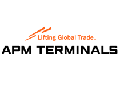Coronavirus pandemic triggers shipping container crisis

Anyone who needs to ship something big — or a great deal of something small — rents an ISO container for the purpose. But that’s not an easy task at the moment — there simply aren’t enough transport boxes available. And buying a container isn’t easy either.
German daily Frankfurter Allgemeine Zeitung recently reported that there are only two companies in the world that build and sell shipping containers — both are based in China.
Anyone in Europe buying such a transport crate will only get it secondhand: It will be loaded in China and used for a shipment before it can be taken over here. At least, the seller points out “signs of use” on the container.
Shipping prices skyrocket
The cost of rent and shipment has also risen. Before 2020, transporting a standard 40-foot container on a ship from a Chinese port cost about $1,000 (€840.2) — currently, one has to pay up to $10,000.
Rising prices are always a sign of imbalance. In this case, it means: increasing demand (for containers or shipping space) with stagnating or even declining supply.
But there is also a shortage of shipping space at the moment. “There are hardly any reserve ships left,” Rolf Habben Jansen, CEO of the logistics firm Hapag-Lloyd, told German magazine Der Spiegel.
Many shipowners had invested little in their fleets in recent years, he said, “because they have not earned the cost of capital over many years. Nobody expected the high demand for shipping transport due to the pandemic. There will not be more ships in the short term.”
Global problems
Even though there won’t be more containers in the short term, the problem with the transport boxes is not entirely their supposedly insufficient number. Containers are almost never used for one-time transport; they are subject to a global cycle.
A box in which Chinese toys have been brought to a European port will, as soon as it returns to the quay unloaded, be loaded again and may carry German machine parts to Asia or North America.
But for almost a year, it’s been difficult to maintain the timetable according to which ships travel between continents. Since the outbreak of the COVID-19 pandemic at the beginning of 2020, global trade has gone off the rails.
Suez was just an episode
Whenever there is talk these days of supply bottlenecks or a failure to deliver goods, the Ever Given disaster in the Suez Canal comes to mind.
Although the canal had been cleared now, the problem had not yet been solved, said Rolf Habben Jansen. “The ships will now arrive in Europe or Asia with a delay of one to two weeks. There could be further congestion there if too many freighters arrive in the major ports at the same time. The return trips will be delayed, and some will have to be canceled altogether,” he noted.
Annette Krüger, spokeswoman for the company Hamburger Hafen und Logistik (HHLA) shares a somewhat similar view. But for her, the Suez Canal blockage is just one piece of the mosaic in the overall picture of a logistics plan that has gone off the rails.
“Ship delays of two weeks — in some cases considerably more — are a situation that HHLA, as terminal operator, has had to deal with for months now,” she told DW.
However, HHLA is already prepared for these delays, because “basically, hardly any ships have reached Hamburg port on time since the beginning of the year,” she added.
The problems began around nine months ago, “after production in East Asia was ramped up again following the first coronavirus lockdown and demand for shipping capacity increased significantly. Other factors included unfavorable weather during the winter months and, at the turn of the year, Brexit.”
Hamburg as part of a port chain
Annette Krüger also expects “even longer ship delays.” But these cannot be predicted so easily, since “Hamburg is not the first port of call after the Suez Canal” for ships from East Asia, she said.
In fact, much depends on how long the turnaround times are, for example, in the Mediterranean ports and in Antwerp or Rotterdam.
All major ports in Europe are suffering from the delays in intercontinental traffic, which are now increasing.
The capacity of Europe’s largest port, for instance, is reaching its limits, a spokesman for the Rotterdam port said last week. “One can’t expand the infrastructure at will. We have to make do with what we have in terms of quays, cranes and terminals.”
The whole system is sputtering
The problems are not limited to the ports, however, as the delays also have an effect on other areas of the economy.
Every “import container” that brings goods becomes an “export container” shortly thereafter, transporting other goods around the world, Krüger pointed out.
“Because of the ship delays, managing export cargo is a particular challenge,” she stressed. “The later the ships arrive, the longer the export containers sit at the terminal facilities.”
Rolf Habben Jansen therefore wants to “use the containers more efficiently” in the future.
He said they could be “making the empty boxes available to our customers a little later than before, i.e., only five instead of 10 days before departure.” The Hamburg port and logistics firms have already “taken various measures to control the inflow of cargo,” said HHLA spokeswoman Krüger.
In addition, they have taken care to ensure that there is at least enough space on which the metal boxes can be placed and have activated “100,000 square meters of additional storage space for containers,” she noted.
Source: DW

 Hellenic Shipping News Worldwide Hellenic Shipping News Worldwide, Online Daily Newspaper on Hellenic and International Shipping
Hellenic Shipping News Worldwide Hellenic Shipping News Worldwide, Online Daily Newspaper on Hellenic and International Shipping





















 PG-Software
PG-Software